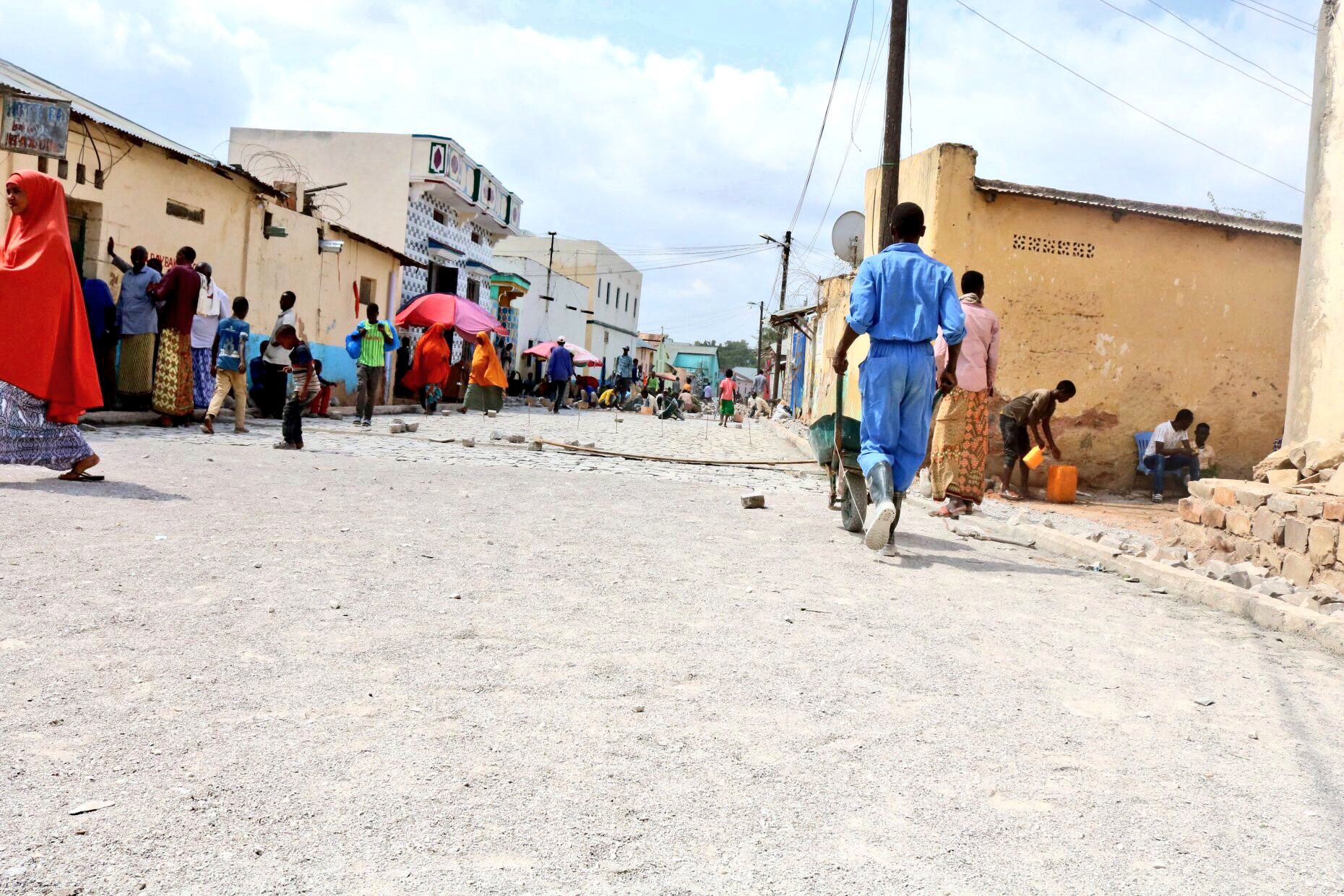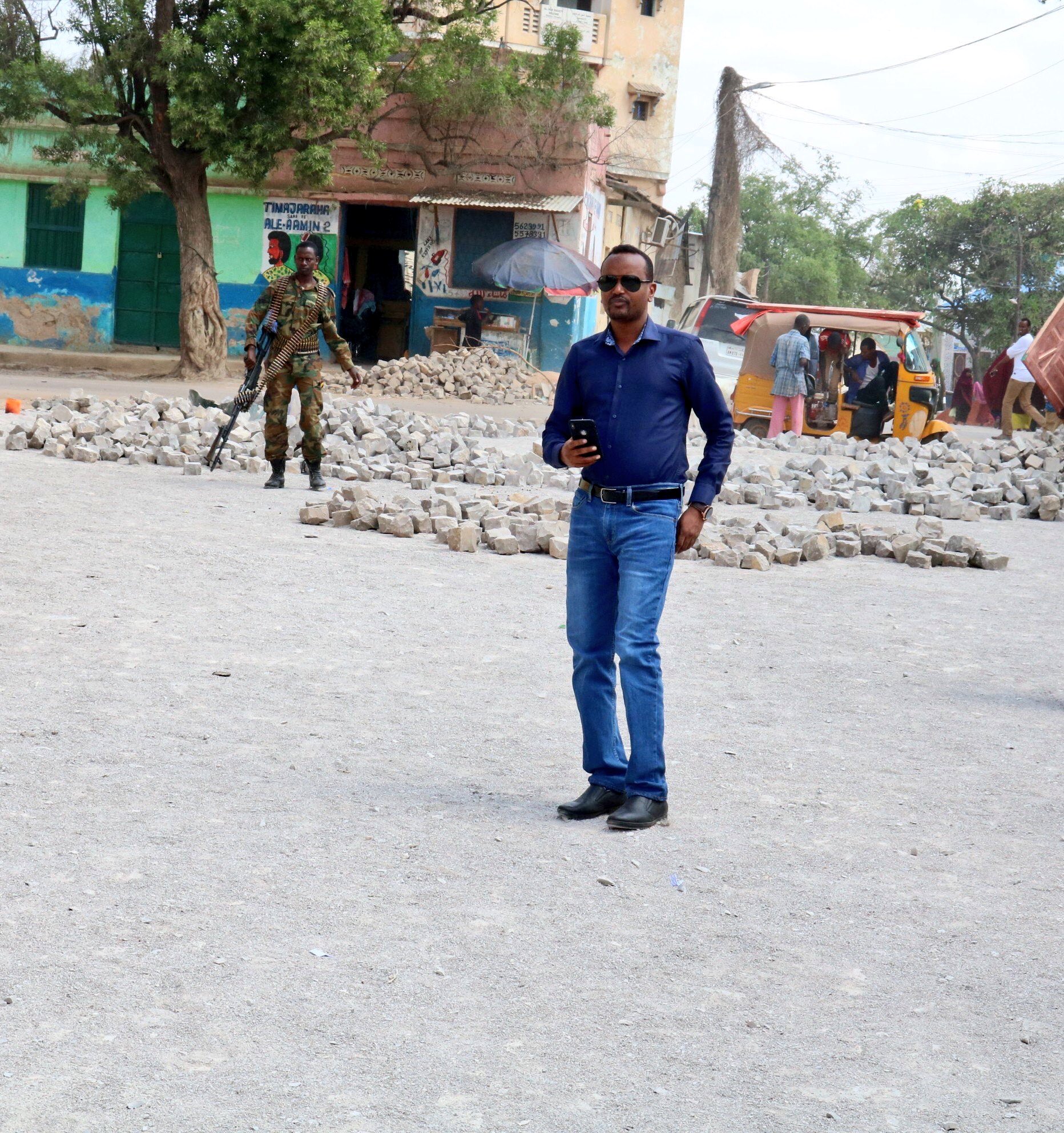I just read this 2015 World Bank report and an article about cobblestone roads in Ethiopia and am left wondering why we exclusively make asphalt roads when such a superior alternative is available.
https://olc.worldbank.org/content/cobblestone-streets-cities-ethiopia
https://citiesalliance.org/newsroom...ting-jobs-and-empowering-ethiopias-urban-poor
Germans came to Ethiopia to train 150 pavers and 1150 chiselers and trainers in 2007. From 2012-2015, Ethiopians constructed 350 km of cobblestone roads in over 140 cities at a cost of 58 million euros.
In the capital of Oromia, the cost of a cobblestone paved road was just 15 euros per square meter. A 200 m road, costs no more than 21,500 euros.
The three main steps of cobblestone road paving include:
Benefits of cobblestone paved roads




We need to do this in Puntland.
@Abdalla @Reiko @Armadillo @Boqor Quark Boqor Cisman @PuntiteQueen @Reer-Bari @Finesse @MSGA @kickz @Manzana @GBTarmy @Karim @Tjioux @Farm @Tukraq @Abdisamad3 @halwa @Ugaaso @Suldaanka @Cabdi @Tucking_Fypo @Yonis @Thegoodshepherd @FBIsomalia @Nilotufian
https://olc.worldbank.org/content/cobblestone-streets-cities-ethiopia
https://citiesalliance.org/newsroom...ting-jobs-and-empowering-ethiopias-urban-poor
Germans came to Ethiopia to train 150 pavers and 1150 chiselers and trainers in 2007. From 2012-2015, Ethiopians constructed 350 km of cobblestone roads in over 140 cities at a cost of 58 million euros.
In the capital of Oromia, the cost of a cobblestone paved road was just 15 euros per square meter. A 200 m road, costs no more than 21,500 euros.
The three main steps of cobblestone road paving include:
- Quarrying
- Extracting raw material from a quarry near the city
- Chiseling
- Transforming the raw material into cobblestones
- Paving
- Laying the cobblestones
Benefits of cobblestone paved roads
- Far more durable and lower maintenance than asphalt roads
- Cobblestones are reusable
- Unlike asphalt, cobblestone roads are permeable, allowing water to penetrate the surface. This decreases flooding and replenishes groundwater stocks.
- Significantly reduces dust and flooding which, in turn, reduces respiratory and waterborne illnesses like malaria and cholera
- Provides charcoal workers alternative and environmentally friendly employment
- Increases land value and promotes business along new roads
- Teaches local municipal governments how to manage their own development projects due to the low costs and decentralized nature of the industry
- Keeps money in the local economy since everything is made and sourced locally whereas asphalt flows money out through purchases of oil and machinery from different countries
- Decreases public transportation costs
- Provides employment for previously unemployed women and youth
- Community driven so that locals have a stake in road quality as well as the skills to maintain it
Case study: The road to better business
Mesele Mena runs the Ply Hotel on a formerly- earthen road in Awassa’s Bermuda area. The new cobblestone road, which now connects to Awassa’s central square, was a pleasant surprise for him and he is glad that the old muddy road is finally gone. The Ply Hotel contributed 1,500 Birr to the cobblestone road project and Mesele is happy about it. “It would be worth contributing even more. It is the first visible project in this area so far.”
After the cobblestone road was built, he noticed an increase in customers and income. The owner of the Kelay Hotel in Awassa, Mr. Kelay is a friendly old man with a strong handshake. “The main problem during the rainy season was the dirt and the mud in the streets outside the bar,” he explains, adding, “During the dry season it was the dust that caused problems and kept customers away.” Kelay himself was so pleased with the cobblestone project that he collected the mandatory fees from other shopkeepers and provided drinks for the construction workers.
He says that he has 30 percent more guests than before, thanks to the new road. Another businessman, Afework, converted a residential house into a bar three months ago. His main reason for opening the New Anbesa Hotel in the Bermuda area was the cobblestone road. He convinced the landlord to lease him the house on a three-year contract involving profit sharing. “The business plan has been successful so far,” he says. For most of the business people in the area, the new road means an increase in income and the elimination of poor hygiene caused by garbage in the street.
Case study: Creating access to neighbourhoods and reducing public transport costs
Prior to the construction of the cobblestone road in 2010, the local residents of the Selle condominium site in Adama usually contracted horse-drawn carts (garis) and three-wheeled taxis (bajajs) to reach their homes. The neighbourhood was only con- nected to the city centre by one rough earthen road, which caused damage to the bajajs. Minibus drivers declined to operate in the area. Residents thus had to pay two to three Euros per trip, which was a major financial burden for most families. A minibus line now operates on the new all- season cobblestone road, and 7,200 local residents are currently benefitting from public transport services for only nine Euro cents per trip.
Case study: Prisoners for chiselling
The town of Shire received a performance grant from the World Bank for its innovative approach to cobblestone road construction. Goitom, an enthusiastic young municipal engineer, began his involvement in the sector by locating raw materials nearby, organised transportation and opened a quarry. He then wanted to start chiselling cobblestones. The price was fixed at 16 Euro cents per stone, and after one month of promoting chisel- ling activities, he was unable to find enough workers for the task.
He discussed the problem with the city manager, who raised the price to 24 Euro cents per stone. Still, not enough labourers were applying for the work. Finally, the city manager decided to ask the local prison for help. A month later, over 200 prisoners were chiselling an average of 4,500 stones per day, each earning 16 Euro cents per stone (almost two Euros per day).
With their new skills, many of them earned much-needed income after their release from prison by continuing to work in cobblestone-related activities.
Case study: Minimising deforestation
The great majority of chisellers who work in Arba Minch are people who previously earned their living by producing charcoal or selling firewood, activities which have led to deforestation in the area. With the intro- duction of the cobblestone sector, the rapid deforestation has slowed, resulting in fewer landslides and decreased fertile soil erosion.
In December, reer Baydhabo completed Somalia's first cobblestone paved roads.Case study: Reducing flooding damage
Located in the old town of Harar, the Jegol area was prone to severe flooding owing to its sloped terrain (which caused surface runoff) and narrow internal streets that impeded surface drainage. Today, the area is paved with cobblestone roads, including sub-surface drainage. Most of the residences are connected to the system. Ms. Rahel lives in the neighbourhood and describes how it used to suffer from frequent flooding, causing considerable damage to her house. “Since the construction of the cobblestone road,” she says, “the area floods less often, less intensely, and leaves much less damage."




We need to do this in Puntland.
@Abdalla @Reiko @Armadillo @Boqor Quark Boqor Cisman @PuntiteQueen @Reer-Bari @Finesse @MSGA @kickz @Manzana @GBTarmy @Karim @Tjioux @Farm @Tukraq @Abdisamad3 @halwa @Ugaaso @Suldaanka @Cabdi @Tucking_Fypo @Yonis @Thegoodshepherd @FBIsomalia @Nilotufian
